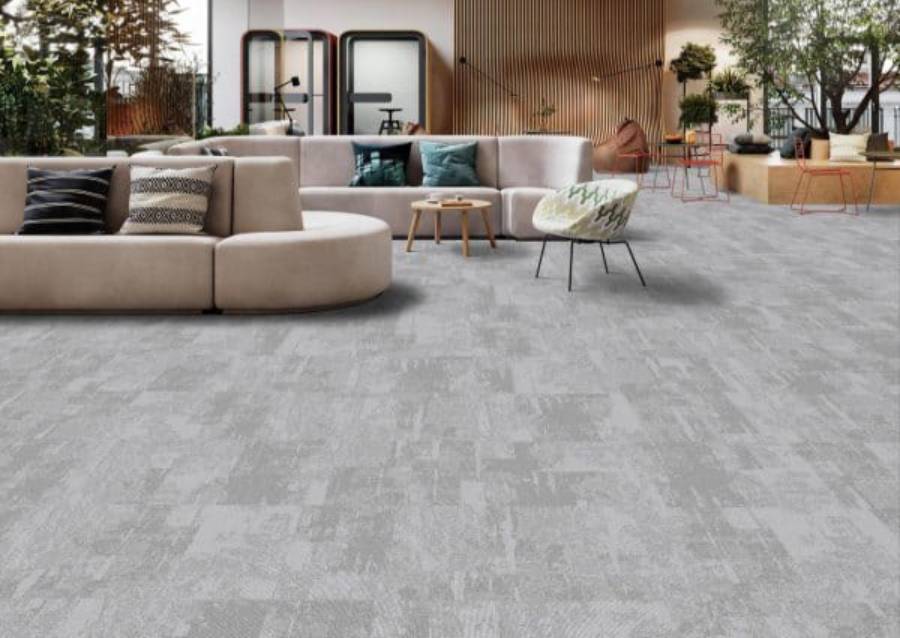Not everything that becomes a cultural phenomenon and a symbol of city pride is designed for that purpose. In some cases, something as functional and understated as a carpet design can turn into a global sensation.
This happened with the carpet at Portland International Airport, which whilst designed to be relatively inoffensive and in keeping with the design language of its era managed to develop the type of cult following few carpets ever do.
To understand why, and what makes a commercial carpet so important for a brand, business and even a city, the best place to start is the beginning.
Why Did Portland International Airport Need A Carpet?
Constructed at its current site in 1936, Portland International Airport (PDX) did not have a carpet for the first half-century of its existence.
At the time, conventional commercial design wisdom was that a hard floor was easier to clean and maintain, especially given that an airport would expect thousands of people to travel through it on a daily basis.
Since 1956, that floor has been made of brown terrazzo, a mixture of concrete and marble chips that was very much a product of its era. This underlying surface still exists today, but there was a practical issue that became increasingly problematic over the years.
The problem with hard surfaces, especially ones made from concrete as terrazzo was, is that they do not provide any sound dampening, which means that passengers and staff cannot help but make a lot of noise as they travel over the terminal with heavy bags and suitcases.
The Port of Portland, the authority that managed the airport, got in touch with a carpet designer to create a new look for PDX.
Northwest Carpet To The Core
Whilst the teal colour and geometric shapes are firmly associated with a particularly 1980s strain of postmodern design characterised by the works of design houses like Memphis Milano, the Portland carpet was designed to be rather different.
It initially consisted of a design inspired by the abstract Port of Portland Logo, but that was a stopgap design whilst carpet designer SRG Partnership researched potential alternatives.
The result they devised was a series of geometric shapes that were meant to depict the north and south runways from the air traffic control tower at night. This simplistic design used blue and green colours ostensibly to represent the Pacific Northwest, which often used teal as part of its regional identity.
The design was completed by 1987 and by the 1990s several acres of the design covered the terminal concourses.
In the case of most commercial carpets, this is the end of the story; people use it, enjoy the design or at least find it inoffensive and it lasts until a decision is made to replace it.
Something rather unusual happened in Portland, however.
Why Did It Become An Icon?
People quite liked the carpet pattern either in its original teal or in a green variant, and over a decade later it had become a minor regional curiosity.
However, after 30 years of use the carpet had become threadbare and worn out due to the effects of decades of heavy passenger traffic, trolleys and bags. According to PDX Next, worn out parts of the carpet were filled in with felt-tip pens and markers.
The decision was made, therefore to get rid of it, but what was meant to be a relatively quiet press conference generated a huge amount of rather unexpected media attention, both locally and nationally.
As it turned out, the “minor regional curiosity” was a viral sensation, and over the years a tradition had formed of Portlanders taking a picture of their shoes on the carpet.
The pattern, which had not been trademarked, was available on socks, t-shirts, helmets and even a signature sneaker, fittingly worn by Damian Lillard of the local Portland Trail Blazers NBA team.
The carpet was even the grand marshal of a Starlight Parade event in Portland.
The replacement announcement and plans were changed as a result; instead of disposing of the carpet, it was cut up and distributed to businesses and locals as a keepsake, and the carpet design which replaced it was remarkably similar in style to the original, albeit with more striking colours.
Ultimately, the original carpet returned to PDX after major renovations began in 2022, much to the delight of the local community.
Why Is Carpet Useful For Branding?
Whilst nostalgia likely had a large role to play in its popularity, it was a design that was unique without being too noisy or intrusive, whilst still clearly reflecting the character of the building it was installed in.
This in itself provides some incredibly useful lessons for companies who wish to integrate their brand identity and brand values into every aspect of their business.
The first and most intentional lesson is the value of taking risks; at the time PDX’s carpet was first installed, airports tended to rely on earthy colours, such as soft greens and browns.
Part of this was a reflection of 1970s design language, part of this was the inevitable consequence of using certain flooring materials that chose practicality over appearance, but the result was a missed opportunity.
This was helpfully illustrated by a Manchester Evening News article showcasing a typical departure lounge from that era and demonstrates the other vital reason for focusing on branded carpets.
Commercial and retail buildings benefit significantly from having a sense of place and identity, either through the use of colours or other unified carpet design elements.
Airports, by their very nature, can sometimes risk creating a sense of detachment and dislocation, and a distinct carpet can help establish that sense of location.
It is rather telling that many people from Portland who like the carpet describe it as part of the process of “returning home” and this phenomena can not only be used for transport buildings but retailers, corporate headquarters and any building where individuality and identity is valuable.




